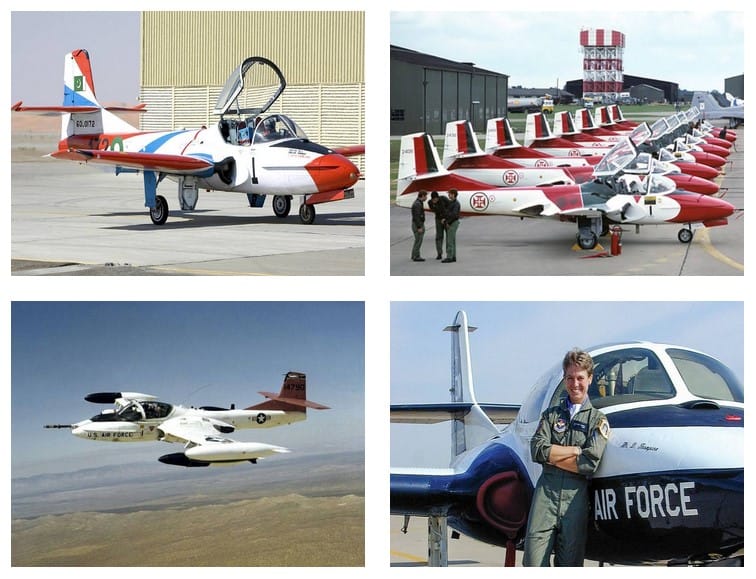The Cessna T-37 Tweet is a small, economical twin-engined jet trainer type which flew for decades as a primary trainer for the United States Air Force and in the air forces of several other nations. The T-37C was also capable of light attack.
The T-37 Tweet is a twin-engine jet used for training undergraduate pilots, undergraduate navigator and tactical navigator students in fundamentals of aircraft handling, and instrument, formation and night flying.
The twin engines and flying characteristics of the T-37 give student pilots the feel for handling the larger, faster T-38 Talon or T-1A Jayhawk later in the undergraduate pilot training course. The instructor and student sit side by side for more effective training. The cockpit has dual controls, ejection seats and a clamshell-type canopy that can be jettisoned. The T-37 has a hydraulically operated speed brakes, tricycle landing gear and a steerable nose wheel. Six rubber-cell, interconnected fuel tanks in each wing feed the main tank in the fuselage.
The T-37B has improved radio navigational equipment, UHF radio and redesigned instrument panels. Many foreign air forces fly the T-37B, including those of Thailand, Greece, Chile, Jordan, Turkey and Pakistan. Students from 12 North Atlantic Treaty Organization countries train in T-37B’s at Sheppard Air Force Base, Texas. Flying the T-37C are the air forces of Portugal, Peru, Colombia and Greece, among others.
The T-37C is similar to the T-37B, but has provisions for both armament and wingtip fuel tanks. The plane can carry two, 250-pound (112.5 kilogram) bombs. Associated equipment includes computing gun sights and a 16mm gun camera. The aircraft can be fitted with cameras for reconnaissance missions.
The T-37A made its first flight in 1955 and went into service with the Air Force in 1956. The T-37B became operational in 1959. All T-37A’s have been modified to T-37B standards. A contract was awarded in August 1989 to Sabreliner Corp. for the T-37B Structural Life Extension Program. The contract included the design, testing and production of kits, installed by a U.S. Air Force contract field team, which modified or replaced critical structural components for the entire fleet, extending the capability of the T-37 into the next century. More than 1,000 T-37s were built, and 507 remain in the U.S. Air Force inventory. All have been repainted in a distinctive dark blue and white to help formation training and to ease maintenance.



